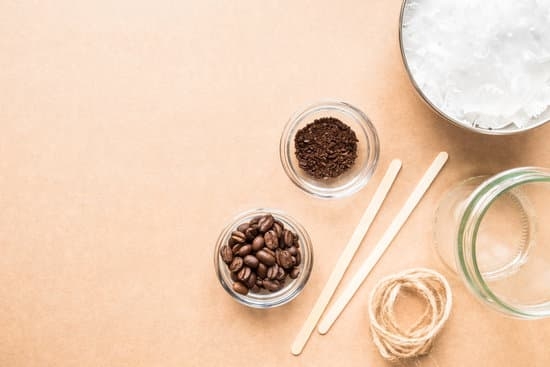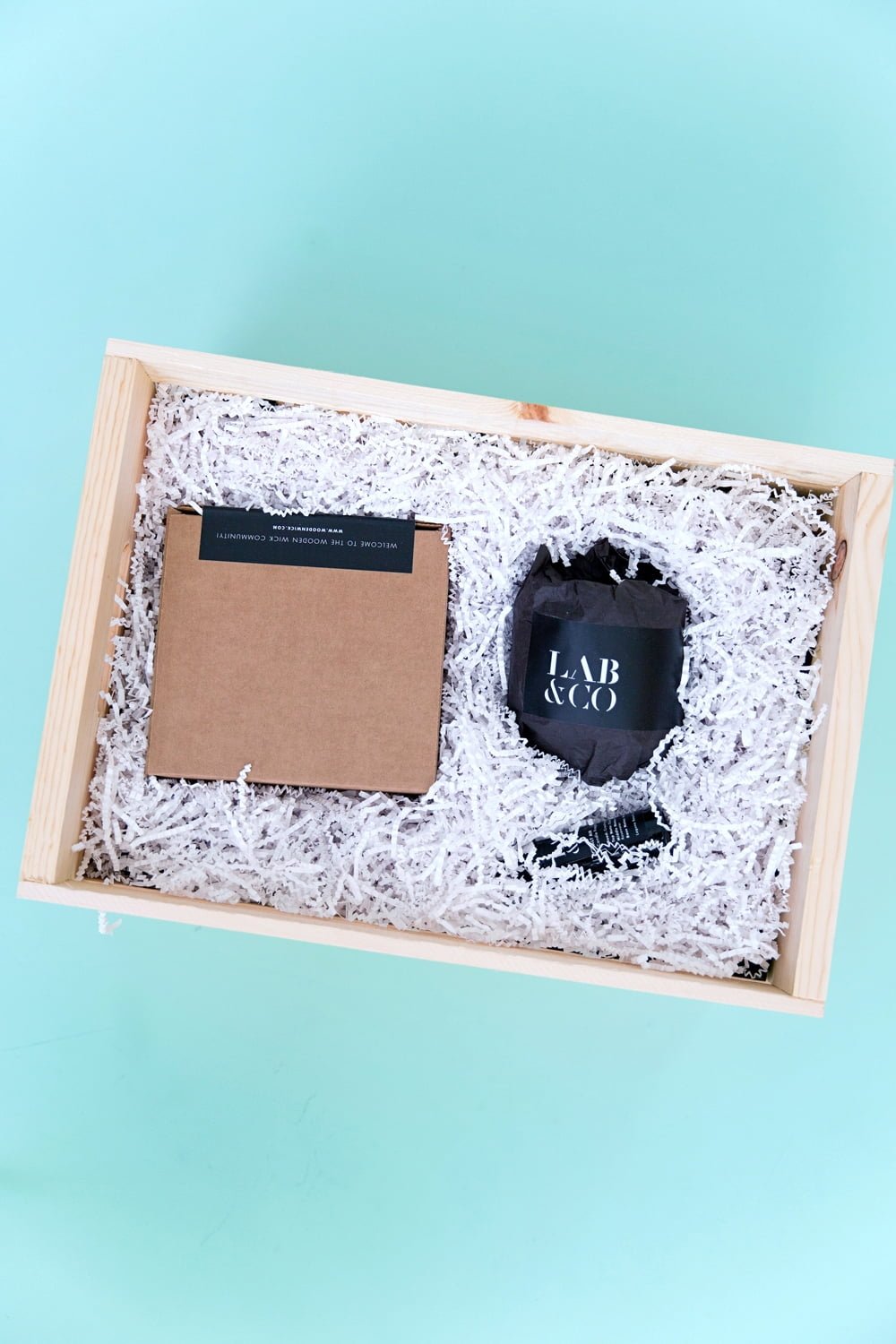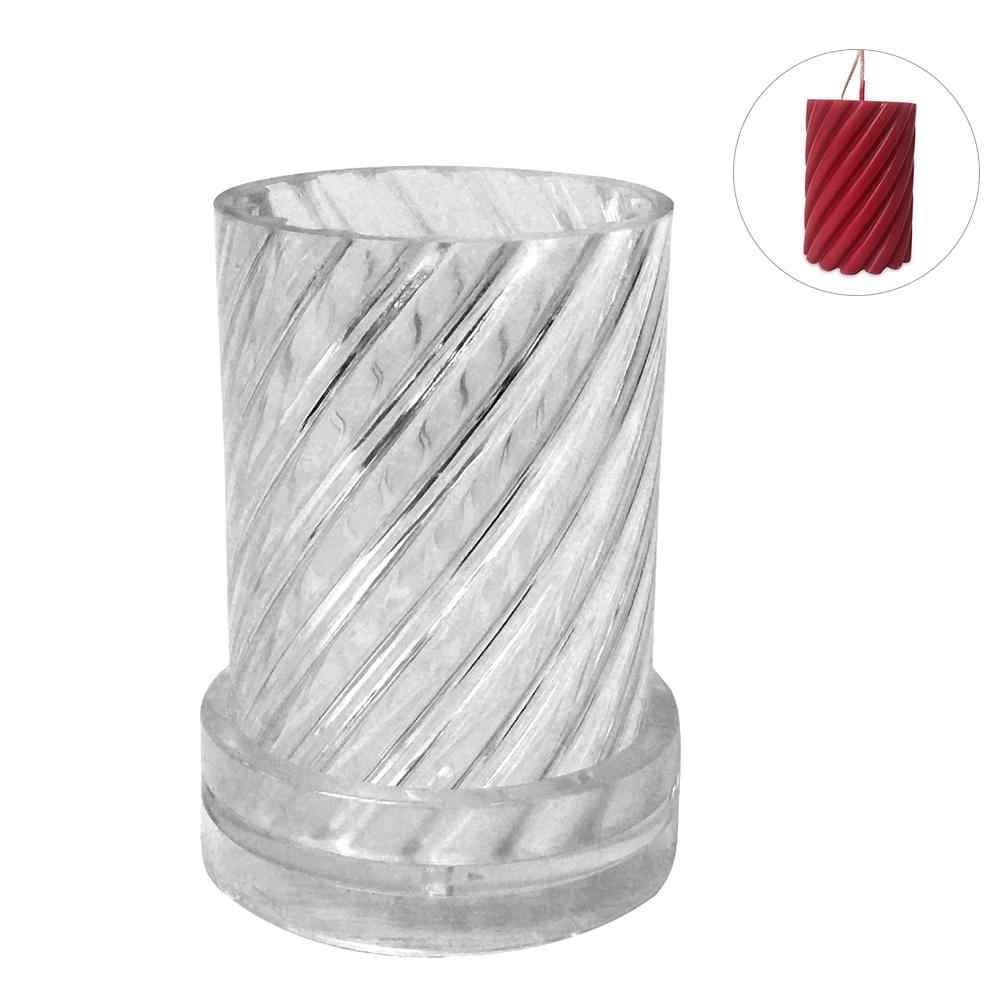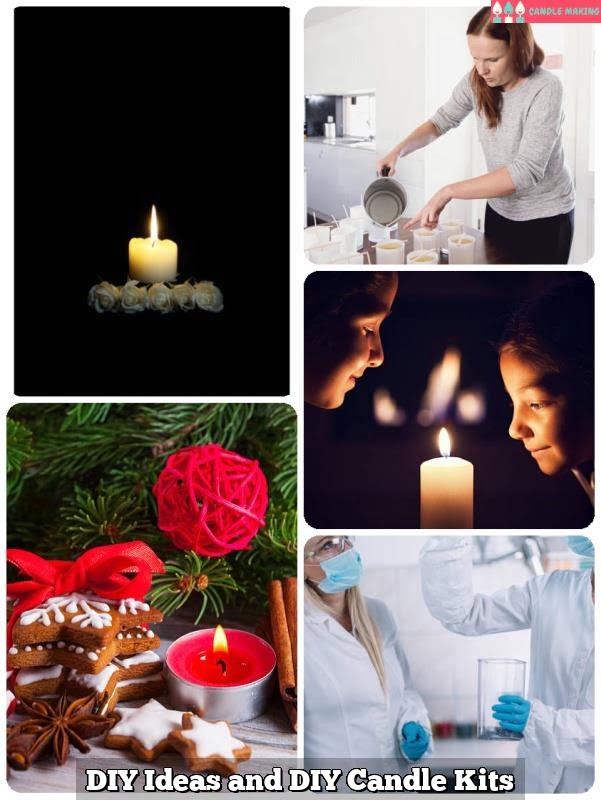Are you looking for creative and cost-effective ways to add warmth and ambiance to your home? DIY candle making could be the perfect solution for you. In this article, we will explore various DIY candle making ideas, from basic materials needed to step-by-step guides, safety tips, and troubleshooting common issues.
Whether you’re a beginner or an experienced candle maker, there’s something here for everyone interested in this craft. Get ready to unleash your creativity and create beautiful, customized candles right at home.
The process of DIY candle making can be both rewarding and enjoyable. By learning the basics of candle making, you can tailor the scents, colors, and designs to suit your preferences and the theme of any occasion.
From choosing different types of wax to experimenting with essential oils and fragrances, the possibilities are endless when it comes to creating your own unique candles. With our comprehensive guide, you’ll be equipped with all the essential information and inspiration to start your DIY candle making journey.
In addition to providing a detailed overview of the materials and techniques necessary for homemade candle production, we will also introduce creative ideas for special occasions. Whether it’s a romantic dinner date or a relaxing bath soak, there are countless ways to elevate these experiences by incorporating custom-made candles. Stay tuned as we delve into various DIY candle making ideas that cater to different events such as weddings, birthdays, holidays, and more.
Basic Materials Needed for DIY Candle Making
When it comes to creating your own candles at home, it’s important to have the basic materials on hand before you begin. These essential items will make the process of DIY candle making much smoother and more enjoyable. The key materials needed for DIY candle making include wax, wicks, a double boiler or melting pot, thermometer, fragrance oils or essential oils, and containers or molds.
First and foremost, having the right type of wax is crucial for successful candle making. There are various types of wax to choose from including soy wax, paraffin wax, beeswax, and coconut wax. Each type of wax has its own unique qualities and benefits, so it’s important to consider what kind of candle you want to make before selecting the appropriate wax.
In addition to the wax, wicks are another essential item for DIY candle making. Wicks come in different sizes and materials such as cotton or wood. The size and type of wick you choose will depend on the diameter of your candle and the type of wax you are using. It’s important to ensure that your wick is properly centered in your container or mold to ensure an even burn.
A double boiler or melting pot is also necessary for safely melting the wax. This will help prevent the wax from scorching and reduce the risk of fire.
A high-quality thermometer is essential for monitoring the temperature of the melted wax to ensure it reaches the correct temperature for adding fragrance oils or essential oils. Finally, having a variety of fragrance oils or essential oils on hand will allow you to customize your candles with unique scents that match your personal preferences or special occasions.
Diy Candle Making Ideas
With these essentials in place, you’ll be well-equipped to start creating beautiful and fragrant candles right in the comfort of your own home.
Different Types of Wax for Candle Making
When it comes to DIY candle making, choosing the right type of wax is crucial for the success of your project. There are several types of wax available, each with its own unique properties and benefits. Whether you prefer soy wax, beeswax, paraffin wax, or a blend of different waxes, understanding the differences between them will help you create the perfect candles for your home.
Soy Wax
Soy wax is a popular choice for DIY candle making due to its natural and eco-friendly properties. It is derived from soybean oil and burns cleaner than paraffin wax, releasing less soot. Soy wax also has a slower burning time, which means your homemade candles will last longer. Additionally, soy wax can hold a high concentration of fragrance, making it perfect for scented candles.
Beeswax
Beeswax is another natural option for candle making. It has a natural honey-like aroma and burns longer than other waxes. Beeswax candles also emit negative ions when burned, which can help purify the air in your home. However, beeswax can be more expensive than other waxes and may require additional care during the melting process due to its high melting point.
Paraffin Wax
Paraffin wax is widely used in commercial candle making but can also be used for DIY projects at home. It is easy to work with and holds color and fragrance well. However, some people prefer to avoid paraffin wax due to its petroleum-based nature and potential for indoor air pollution when burned.
Choosing the right type of wax for your DIY candle making project depends on your personal preferences regarding sustainability, scent throw, burn time, and budget constraints. Experimenting with different types of waxes can lead to discovering which one suits your needs best when creating handmade candles at home using diy candle making ideas.
Essential Oils and Fragrances for Scented Candles
Adding essential oils and fragrances to your DIY candles is a great way to customize the scent and create a unique sensory experience. There are a variety of essential oils available, each with its own therapeutic properties and aromatic profiles. Some popular choices for scented candles include lavender, vanilla, citrus, and eucalyptus.
When choosing essential oils for your candles, it’s important to consider the strength of the fragrance as well as how it complements the type of wax you are using. For example, soy wax tends to hold onto scents well, while beeswax has a natural honey aroma that may compete with added fragrances. It’s also worth noting that some essential oils can be more costly than others, so factor in your budget when planning your candle-making project.
In addition to essential oils, you can also use fragrance oils specifically formulated for candle making. These synthetic fragrances come in a wide range of scents and often have a more potent and longer-lasting aroma compared to essential oils. Whether you choose natural essential oils or synthetic fragrance oils, always follow recommended usage rates to ensure the safety and quality of your scented candles.
| DIY Candle Making Ideas | Scented Candle Options |
|---|---|
| Lavender Essential Oil | Calming and relaxing scent perfect for bedroom or relaxation area candles. |
| Vanilla Fragrance Oil | A comforting and sweet aroma ideal for creating a warm ambiance in living spaces. |
| Citrus Blend Essential Oil | Fresh and invigorating scent suitable for kitchen or outdoor use candles. |
| Eucalyptus Essential Oil | Refreshing and energizing fragrance great for home office or study room candles. |
Creative Candle Molds and Containers
When it comes to DIY candle making, the creative possibilities are endless, especially when it comes to choosing molds and containers for your candles. The right mold or container can elevate the look of your candle and add a personal touch to your creation. Whether you prefer classic glass jars, vintage teacups, or unique silicone molds, there are countless options to suit your style and enhance the aesthetic of your candles.
Choosing the Right Containers
When selecting containers for your candles, it’s important to consider both aesthetics and functionality. Glass jars are a popular choice for homemade candles as they allow the glow of the flame to shine through and create a cozy ambiance.
If you prefer something more unconventional, consider using vintage teacups, tin cans, or even hollowed-out fruits like oranges or lemons for a unique twist. For outdoor use, consider using heat-resistant terracotta pots or metal tins that can withstand higher temperatures.
Exploring Different Molds
If you want to experiment with different shapes and sizes for your candles, using molds is a great way to customize their appearance. Silicone molds come in a variety of shapes and designs, from geometric shapes to intricate patterns and animal figures.
These molds are flexible and easy to work with, allowing you to create truly unique candles. You can also repurpose household items like milk cartons, eggshells, or even ice cube trays as makeshift candle molds for one-of-a-kind creations.
Personalizing Your Candles
No matter which containers or molds you choose for your DIY candle making project, don’t forget to personalize them with decorative elements such as ribbons, labels, or charms. Adding these details not only enhances the visual appeal of your candles but also makes them perfect for gifting on special occasions such as birthdays, weddings, or holidays.
The combination of carefully chosen containers and personalized touches will make your homemade candles stand out and become cherished keepsakes for your loved ones.
With a wide range of creative candle molds and containers available, DIY candle making allows you to unleash your imagination and bring your vision to life through beautiful handmade creations that reflect your personal style. Whether you opt for traditional glass jars or get inventive with unexpected materials as containers or molds, there’s no limit to the unique designs you can achieve with DIY candle making ideas.
Step-by-Step Guide to DIY Candle Making
When it comes to creating your own candles, the possibilities are endless. Whether you’re a beginner or an experienced crafter, DIY candle making is a fun and rewarding activity that allows you to customize your own home decor and gifts. Here’s a step-by-step guide to get you started on your candle making journey.
1. Prepare your workspace: Before you begin, make sure to set up a clean and spacious area for your candle making endeavors. Lay down newspaper or a protective covering to prevent any spills or messes.
2. Gather your materials: To make a basic candle, you will need wax, wicks, a double boiler or microwave-safe container, fragrance oils (if desired), and a thermometer. You can also add color dyes to customize the look of your candles.
3. Melt the wax: Using a double boiler or microwave-safe container, melt the wax at the recommended temperature for the type of wax you are using. Stir occasionally to ensure even melting.
4. Add fragrance and color: Once the wax has melted, remove it from the heat source and stir in your chosen fragrance oils and color dyes. Be sure to follow recommended guidelines for safe usage of these additives.
5. Set the wick: Dip the bottom of the wick into the melted wax and then adhere it to the bottom center of your chosen container or mold. Use chopsticks or pencils to keep the wick centered as the wax cools and solidifies.
6. Pouring the wax: Carefully pour the scented and colored wax into your containers or molds at the appropriate temperature for best results.
7. Let it cool: Allow your candles to cool and harden completely before trimming the wick and enjoying their warm glow.
Creating your own candles can be a wonderful way to explore different scents, colors, and designs while adding a personal touch to any space.
| Materials Needed | Benefits |
|---|---|
| wax | Allows customization |
| wicks | Personalized home decor |
| containers/molds | Customized gifts for loved ones |
Safety Tips for Candle Making at Home
When it comes to making your own candles at home, safety should always be a top priority. Here are some essential safety tips to keep in mind before you start your DIY candle making project:
- Choose a well-ventilated area for your candle making
- Always use a double boiler or melting pitcher to melt wax
- Avoid overheating the wax, as this can pose a fire hazard
- Keep flammable materials away from the candle-making area
- Use caution when working with hot wax and never leave it unattended
- Keep a fire extinguisher nearby, just in case of emergencies
Furthermore, it’s important to consider the safety of the materials you use when making candles. Ensure that you purchase high-quality waxes, fragrances, and dyes that are specifically designed for candle making. This will not only improve the quality of your candles but also reduce potential health risks associated with low-quality materials.
Lastly, always read and follow the instructions on any candle making supplies you purchase. This will help ensure that you are using them in a safe and effective manner.
Now that you are aware of these essential safety tips for DIY candle making, you can enjoy creating beautiful candles at home with peace of mind.
DIY Candle Making Ideas for Special Occasions
Are you looking for unique and personalized gift ideas for birthdays, weddings, or holidays? Why not consider making your own custom candles? DIY candle making is not only a fun and creative activity, but it also allows you to create one-of-a-kind candles that are perfect for any special occasion. Here are some DIY candle making ideas for different occasions:
- Weddings: Create elegant and romantic tapered candles in pastel colors to use as centerpieces or party favors.
- Birthdays: Make colorful and fun scented jar candles with personalized labels as party giveaways or birthday presents.
- Holidays: Craft festive and aromatic pillar candles in holiday-themed shapes like Christmas trees, snowflakes, or pumpkins for seasonal decorations.
Whether it’s a wedding, birthday, or holiday celebration, customized DIY candles add a personal touch and thoughtful sentiment to any occasion.
Tips for Personalizing Your DIY Candles
Thinking of ways to add a personal touch to your homemade candles? Here are some ideas on how to make your DIY candles even more special:
- Add dried flowers, herbs, or glitter to the wax for unique textures and visual appeal.
- Create custom labels with the recipient’s name or event date for a personalized touch.
- Experiment with different color combinations and scents that reflect the theme of the occasion.
By incorporating these personalized touches into your DIY candle making process, you can create memorable gifts that will be cherished by your friends and loved ones.
So whether you’re celebrating a wedding, birthday bash, or festive holiday gathering, consider adding a personal touch to the occasion with handmade DIY candles. With these creative ideas and tips, you can make every special event even more memorable.
Troubleshooting Common Issues in DIY Candle Making
Are you experiencing problems with your DIY candle making projects? Don’t worry, it’s common to encounter issues when working on any craft. Troubleshooting common issues can help you improve your skills and achieve better results in your candle making endeavors. Here are some tips to help you identify and address the most common problems encountered in DIY candle making.
One common issue that DIY candle makers face is uneven burning. This occurs when the wick is not properly centered or if the candle was not poured at the correct temperature.
To fix this problem, make sure to center the wick in the middle of the container before pouring the wax. Additionally, use a thermometer to monitor the temperature of the wax as you pour it into the container, ensuring that it is at the optimal temperature for an even burn.
Another common issue is tunneling, which happens when a hole forms down the middle of the candle, leaving wax around the sides untouched. To prevent tunneling, it’s important to allow your candles to burn long enough during each use to create a full melt pool across the entire surface of the candle.
If tunneling has already occurred, you can try to fix it by using a heat gun or hairdryer to gently warm and melt the wax around the edges and encourage it to fill in any tunnels.
Lastly, frosting can be an issue when making soy candles. Frosting appears as a white powdery layer on top of the candle and is a natural characteristic of soy wax. To minimize frosting, try pouring at a slightly higher temperature or cooling your candles at a slower rate to reduce the appearance of frosting on your finished product.
By identifying and addressing these common issues in DIY candle making, you’ll be able to create beautiful, high-quality candles that burn evenly and look stunning in any setting. Taking note of these troubleshooting tips will help ensure that your next batch of handmade candles turns out perfectly.
Remember that every mistake is an opportunity to learn and improve your craft.
Conclusion
In conclusion, DIY candle making is not only a creative and enjoyable hobby but also comes with a wide range of benefits. By making your own candles, you have full control over the materials used, allowing you to create non-toxic and environmentally friendly products. Additionally, you can customize the scents and colors to suit your preferences or create personalized candles as gifts for friends and family.
Furthermore, engaging in DIY candle making can be a cost-effective alternative to purchasing expensive candles from stores. With just a few basic materials and ingredients, you can produce high-quality candles at a fraction of the cost. This can result in significant savings over time, especially if you frequently use candles in your home.
Lastly, creating your own candles provides a sense of satisfaction and accomplishment. There is something special about being able to enjoy the ambiance of a room lit by your own handmade candles. Whether for personal use or for special occasions such as weddings or holidays, DIY candle making allows you to express your creativity while reaping the practical benefits of producing your own unique and beautiful candles.

Welcome to my candle making blog! In this blog, I will be sharing my tips and tricks for making candles. I will also be sharing some of my favorite recipes.





